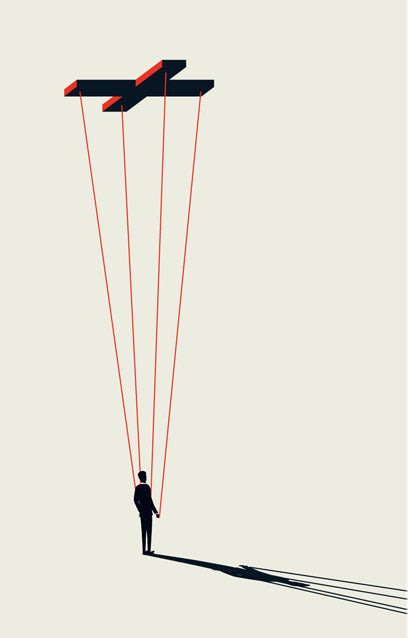
It was hot. I mean really hot. I mean, steaming towel in the face, dripping sweat head-to-toe hot. While enduring this weather, I spent hours in combat boots and fatigues lost while I scrambled in, over, and around a tick-infested tangle of brush, trees, and briars. This is my recollection of an orienteering field test we ROTC cadets were required to take at Fort Bragg North Carolina on a 100-plus-degree day in August 1981.
The idea behind this basic military skills test was sound. To be officers in the US Army, we each needed to demonstrate that we knew how to use a map and compass to navigate through the wilderness from point A to point B. So, after being provided both these navigational aids, we were required to find several designated markers located in an overgrown North Carolina forest a kilometer or so away from our starting points.
I found this exercise very difficult and was grateful I was not leading troops in hostile territory. In class, we were taught to use pop-up slits on the compass to “shoot azimuths” in the desired direction of travel and locate landmarks in the distance that presumably lay between us and our objective. The idea is that once you identify such a landmark, you go to it and repeat the process until you arrive at your destination. We were also taught to track the distance traveled by counting our steps and taking into account our stride length.
This technique works fairly well in open country with prominent landmarks like mountains, rivers, and roads. But let me tell you, I’ve seen jungles on nature shows that would qualify as “prairie land” in comparison to the briar and brush-filled terrain we were expected to navigate. The farthest azimuth I was able to shoot was about 10 feet in front of me. And the brush was so thick and obstacles so numerous, it was impossible to walk in a straight line, rendering step-counting useless. Compounding the challenge was the virtual invisibility of our objectives, which were blue-painted coffee cans hung 10 feet off the ground in trees with dense, draping canopies.
After slogging my way for over a kilometer to my first objective, I searched and searched without success for the first of the three coffee cans I needed to locate. It was at that point that a member of the 82d Airborne unit assigned to proctor the test took pity on me and pointed to a tree just 10 yards from where I was standing. I have to confess, absent his assistance, I’d still be looking for that can today.
I liken this experience to the challenges corporate executives face now as they lead their “troops” through the moral thicket presented by the COVID-19 pandemic. When contending with the worst economic and public health crisis in a century, the oft-used phrase “just do the right thing” is of no more use to a CEO than the phrase “just go in the right direction” would have been to me on that sweltering August day in the forest 39 years ago.
This observation becomes self-evident when you consider the menu of potential “right things” business leaders are now compelled to choose from:
- Seek government bail-out funds and accept the strings attached;
- Immediately lay off a segment of the workforce regardless of the hardship they and their families might face;
- Re-open operations as soon as possible while risking employee and customer safety;
- Reduce capital spending plans, even though this may mean postponing projects essential to improving company efficiency and long-term competitiveness;
- Do nothing as long as possible, hoping that the business will pick up before the money runs out;
- Cut working hours, wages, or benefits;
- Implement a combination of these options depending upon events as they unfold; or
- Seek protection under the bankruptcy laws.
Discerning an ethical path in the uncharted wilderness we find ourselves in today is as difficult as it is gut-wrenching. There are no easy answers and the decisions we make today will have significant life and death consequences tomorrow. Even if you are able to re-open your business, additional vexing ethical questions will persist for the months and, likely, years to come:
- How safe is safe enough for our workforce and/or our customers?
- Once we determine an acceptable safety level, how do we achieve it?
- Do we extend paid sick leave to all employees even if doing so might drive the company into a liquidity crisis?
- What support should the company provide to employees and their families if they contract COVID-19 on the job?
- If there is a significant outbreak at our firm or in our community, should we shut down?
- What should we do if customers get infected at one of our business locations? What, if any, assistance or compensation should we provide?
There is no clear roadmap to guide us in these unprecedented circumstances. The best we can all do is to ensure that our decision-making process is sound and takes into account all the relevant facts and moral considerations. In this regard, my best advice is to use the Canons of Business Ethics (the Canons) as a guide:
The Canons, first published in the January 2015 issue of the ACC Docket, read as follows:
Prior to making important business decisions, business professionals shall devote reasonable time and resources commensurate with their means and the gravity of the circumstances to undertake the following actions in good faith and with a genuine interest in discerning an ethical course:
- Determine the facts.
- Identify relevant moral obligations.
- Recognize conflicts between relevant moral obligations.
- Determine reasonable options.
- Consider the likely consequences of each option.
- Select an option that, at a minimum, has the following attributes:
- Its intended purpose is to pursue a good end;
- It pursues the good end with ethical means;
- It takes reasonable measures to mitigate harm; and
- The intended good is in due proportion to harm that may be caused by the chosen option.
No decision-making methodology can guarantee a perfect outcome and there is never a risk-free path. However, conscientious application of the Canons will enrich your deliberations and give you greater confidence than you otherwise might have to decern an ethical course in the difficult days ahead.
I refer you to the published article for a more detailed description of the Canons and how they might be used in making important business decisions. ACC Docket, 26-37, Volume 33, No. 1 (January 2015).




